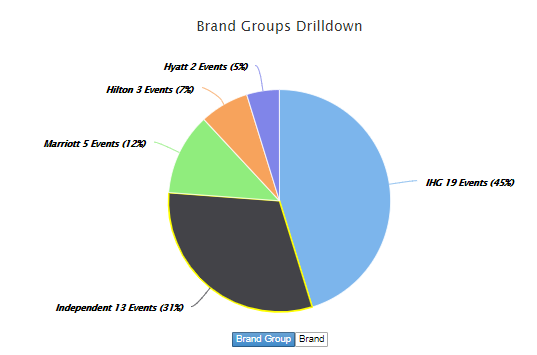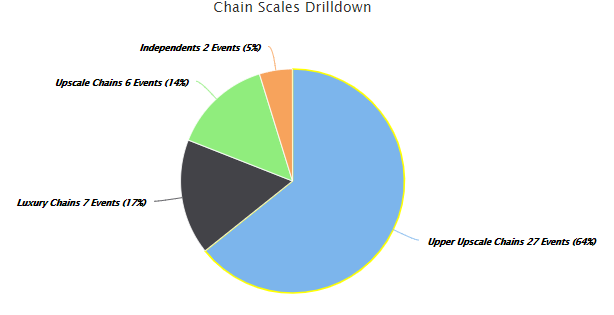By Kristi White, VP of Product, Knowland
In this this third and final installation of our “Playing to win” series, we take a look at inbound leads and how they should fit into your mix of business.
Inbound leads are a reality and will never completely go away, even in a downturn. However, a one size fits all approach to inbound leads is often detrimental and ineffective.
There are more strategic ways to respond to them. Do you have a strategic methodology on how you respond? Let me rephrase that, do you have a strategy that doesn’t involve “be first”?
Perhaps it’s time to contemplate how you evaluate inbound leads and then thoughtfully respond versus pulling the rate trigger. Your teams should have a way to understand leads and their overall value vs. the value of a singular lead.
As we work with customers, consistently hear they have corporate mandates to reply to all leads. Further, there is usually a time frame to do so (2-4 hours seems to be the standard). Without the proper tools, how can a hotel reply thoughtfully to a lead in 2-4 hours? At best you will be limited to the rates, dates, and space bid. This effectively reduces the conversation and the bid to price.
Your sales team needs to be able to understand the piece of business beyond the single transaction that fell into your inbox. They need to be able to understand the following:
- How many meetings does the group plan?
- What types of hotels do they buy?
- What chain scales do they prefer?
Google isn’t going to tell you that (at least not in 2-4 hours). And, chances are, your sales team won’t be able to get the planner on the phone to go through those level of details.
Your team needs a tool that will let them do that research in the mandated time frame. Additionally, the right tool will help influence the rates offered and allow them to respond (or not) more meaningfully. Knowland can place all of that information at their fingertips in an instant.
The ability to see how and when the group holds meetings. Even the ability to influence that against need periods.
Then to drill down to see what hotels they are using when they meet. This gives insight into their preferences in the types of properties they use.
Finally, understanding the class of hotel use to gain understanding into the rates they’ve probably paid in the past.
All of this lets your teams understand the nature of the business. It takes the process of responding to an inbound lead from transactional to the springboard to start a deeper relationship with a customer.
Technology has proven to be a double-edged sword in hospitality. At the beginning of the century, OTAs commoditized the transient segment. Cvent and its vise-like grip on group is headed in the same direction. You might balk at the comparison but the reality is, it’s real.
OTAs created one-off customers only loyal to the lowest rate. How is that any different from the transactional model the industry has with inbound leads. When you place your business at the whim of a third party you diminish the conversation to one about price alone. No one wins when the whole conversation is about price. It’s time we raise our game and take control of our business.
Imagine if at the advent of OTAs you’d had the ability to understand the value of a single customer at the point they booked and made a decision on whether or not you wanted to offer that customer a rate. There was no way to do that then but there is now.
But first, you have to place an emphasis on how you evaluate and prioritize inbound leads. Invest in those processes and the tools that let your teams evaluate inbound leads for fit, likelihood to win, and their value beyond the singular piece of business. Then approach that business with the mind-set to capture all of their business. This should be about creating relationships not transactions.
The industry is still stable, there is even still growth across the industry. That means there is still time to take advantage of stable demand to change your strategy, to change the way your teams operate.
This can happen in many different ways however, the most important way is to develop a team of hunters whose sole focus is searching for business, developing those accounts, and building long-term relationships.
But where do you start? Below are the seven things you should do today if you do nothing else.
- Define the segments – Which segments are the best fit for your property? Certain segments are more profitable than others but are those a fit for the attributes of your property. Additionally, this best fit might change seasonally look at all of those parameters.
- SWOT Analysis – Understand your comp set and which segments they are getting business from and then do an honest SWOT analysis on how you can do it better. Additionally, it might make sense to have multiple different comp sets to cover the segments you need.
- Stratify your team – This isn’t about the segments they work (at least not wholly). This is about separating the hunters from the gatherers. Having individuals whose sole focus is in acquiring new accounts and capturing as much of their business as possible.
- Commit time to prospecting – For those individuals focused on prospecting, remove the obstacles preventing them from selling.
- Give them tools – Your hunters should have the tools to identify prospects. And, no, that isn’t your existing database. Not that there won’t be prospects there, but accounts using your competitors or even going to other cities are where they should hunt.
- Other Markets – Don’t make the mistake in thinking all of your prospects will be sourced within your market. Chances are business that meets at your hotels also meets in other markets. Your tools can show you where else they having meetings. Your teams should know what those markets are and how their market compares. Finally, they should know how to compare their destination to others effectively.
- Hold them accountable – Create ways to track their efforts and measure their production. Agree on the metrics you will use to measure them in the short, mid, and long term because those will evolve.
Shore up your sales teams and their processes. Training, tools, and focus on creating relationships should be the battle cry for 2020. Prepare them for what is coming because, chances are, they don’t know what to do.
It’s coming, supply is going to outpace demand. What you do today will determine whether your team is going to panic or simply change course. Those able to change course will drive their own demand and have the edge needed to remain competitive and maintain share, in all economic times. And if they can do that, imagine how well they will do when demand returns.





